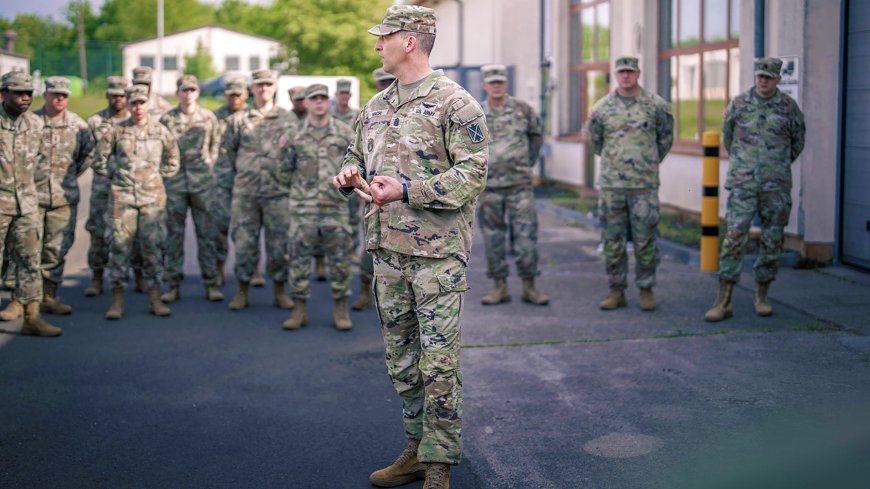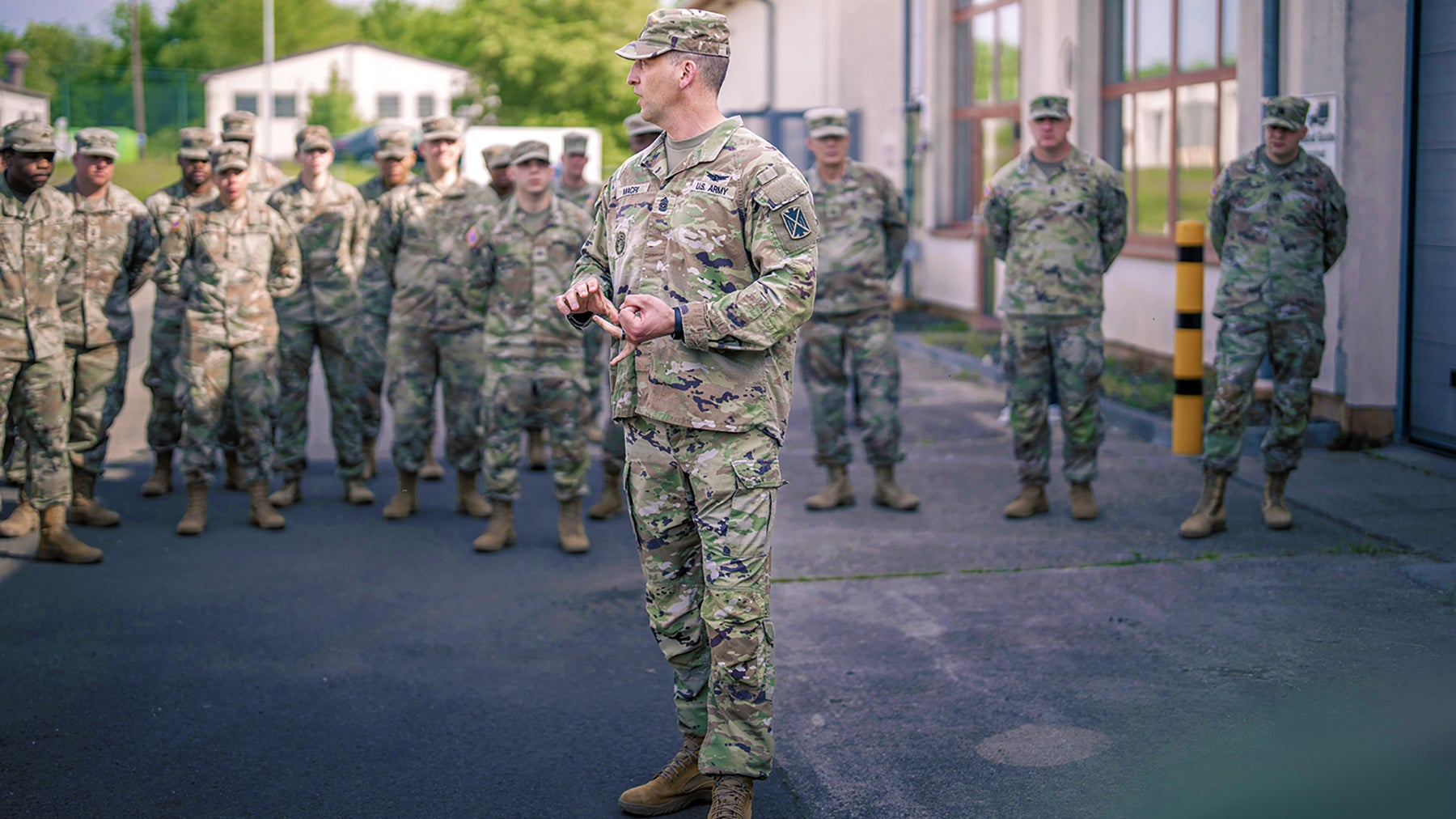Build Respectful Behavior to Curb Sexual Violence
Build Respectful Behavior to Curb Sexual Violence Association of the United States Army

Sustainable Development Goals and Sexual Violence in the Army
Sexual assault and harassment—hereafter referred to as sexual violence—is a serious problem that affects the Army’s readiness and morale. Although the purpose of the Army’s Sexual Harassment/Assault Response and Prevention program is to protect victims and discipline abusers, it is not enough for prevention. SHARP is a reactive program that only addresses the symptoms, not the root causes.
The Need for a Different Approach
If the true goal is to create an environment in which sexual violence cannot survive, a different approach is needed, one that prioritizes the health of the organization by strengthening its professional relationships.
Although the SHARP program has undergone positive changes, it has struggled in its efforts to prevent sexual violence. Despite giving the program new teeth to punish abusers and expanding tools to support victims, according to DoD, the military is still facing an increase in reports of sexual violence. While there have been calls for innovative ideas to resolve these threats, the SHARP program focuses on symptoms rather than the disease.
The problem is that the Army relies almost exclusively on reactive, fear-based responses to SHARP-related incidents. Annual briefings for soldiers outline punitive consequences. Disciplinary councils publish quarterly reports distributed to Army leaders detailing punitive actions taken that keep the fear fresh. Army leaders and SHARP representatives aggravate the issue when they convey statistics of sexual violence and its effect on the force.
However, the increase in reports of sexual violence suggests that these tactics are not effective. Furthermore, according to recent studies by Maastricht University in the Netherlands and the University of Illinois, the efficacy of scare tactics in deterrence and behavior change is still up for debate. While threats and warnings bring attention to a problem, this is not a beneficial strategy for positive behavior change.
Focus on Strengths
By primarily addressing the symptoms, the Army creates fear, and the potential for real change is lacking. Rather than aiming to eradicate the issue, the Army treats sexual violence as a problem to manage or reduce. This perspective does not offer hope for a future devoid of sexual violence. If goals drive the means, then maybe the Army’s goal in terms of SHARP is wrong. What if the focus on the problem is the problem? Perhaps the Army needs to reframe the language of what it really wants.
Studies by Naval Postgraduate School researchers highlight the importance of language in how people communicate goals and take action to achieve results. The language used to frame questions often influences the answers. When goals focus on fixing problems, Army leaders will only discover more problems. However, by using language that frames the inquiry of goals in terms of strength and innovation, leaders can discover solutions that build toward an ideal future.
To understand the importance of language that focuses on strengths and its impact on choices and reality, consider the analogy of lawn care. To cultivate a healthy lawn in the face of spreading weeds, one should use methods to strengthen the grass through regular care such as proper fertilization and a good watering cycle, using poison only as a spot treatment. This approach requires careful attention to attacking weeds, but allows for stronger, healthier grass to grow and eventually overcome the weeds, rather than weakening the grass with excessive use of weedkiller.

Too often, problem-solving methods prioritize deficit-based approaches that seek to punish undesirable behavior (the symptoms of a disease) and therefore do little to define and promote the ideal behavior that would prevent the disease. By reframing goals to focus on developing ideal behavior, Army leaders can take an appreciative approach that strengthens positive aspects, encourages growth and leads to more effective solutions in the long run.
This approach requires a shift in focus toward building and nurturing strengths and creating ideal conditions, with problem-solving methods serving as spot treatments rather than the sole focus.
The aim of preventing sexual violence in the Army requires a shift in focus from simply punishing bad behavior to cultivating positive behaviors and practices that foster healthy, professional relationships between men and women.
Appreciative inquiry, a methodology for organizational goal-setting developed in the 1980s by David Cooperrider, a professor at Case Western Reserve University, Cleveland, is a powerful tool that can be used to identify and appreciate positive behaviors and practices within an organization. By inquiring into an organization’s strengths, employees can expand their capacity and release their potential, creating a positive environment of respectful behavior.
The appreciative approach follows a methodology called the 4-D model. First, employees discover the strengths of the organization through interviews and small-group dialogue. Then, they dream of what the organization could look like in its ideal state as it relates to the topic. Next, the employees design outcomes and initiatives to achieve their vision. Finally, they deliver their vision by implementing their proposed changes.
A case study of the appreciative approach in action is the work of consultant Marjorie Schiller, who was hired by the beauty products company Avon Mexico to address the issue of sexual harassment in the workplace in the late 1990s. After failing to achieve any positive results using classic problem-solving, Schiller and her firm turned to Cooperrider’s appreciative approach.
By incorporating the appreciative methodology, Schiller and her team modified their goal from decreasing sexual harassment to promoting high-quality cross-gender relationships within Avon Mexico. The outcome was nothing short of dramatic as,
SDGs, Targets, and Indicators
1. Which SDGs are addressed or connected to the issues highlighted in the article?
- SDG 5: Gender Equality
- SDG 16: Peace, Justice, and Strong Institutions
2. What specific targets under those SDGs can be identified based on the article’s content?
- SDG 5.2: Eliminate all forms of violence against all women and girls in public and private spheres, including trafficking and sexual and other types of exploitation.
- SDG 16.1: Significantly reduce all forms of violence and related death rates everywhere.
3. Are there any indicators mentioned or implied in the article that can be used to measure progress towards the identified targets?
- Number of reported cases of sexual violence in the military.
- Number of disciplinary actions taken against perpetrators of sexual violence.
- Perception surveys on the prevalence of sexual violence and the effectiveness of prevention programs.
The article discusses the issue of sexual violence in the Army and highlights the need for a different approach to prevention. This issue is directly connected to SDG 5, which aims to achieve gender equality and eliminate all forms of violence against women and girls. Additionally, SDG 16, which focuses on peace, justice, and strong institutions, is relevant as it calls for the reduction of all forms of violence and related death rates.
Based on the content of the article, specific targets under these SDGs can be identified. SDG 5.2 aims to eliminate all forms of violence against women and girls, including sexual violence. SDG 16.1 targets the reduction of all forms of violence and related death rates. These targets align with the goal of preventing sexual violence in the Army and promoting healthy, professional relationships.
The article mentions indicators that can be used to measure progress towards the identified targets. These indicators include the number of reported cases of sexual violence in the military, the number of disciplinary actions taken against perpetrators of sexual violence, and perception surveys on the prevalence of sexual violence and the effectiveness of prevention programs. These indicators can provide insights into the effectiveness of efforts to prevent sexual violence and promote positive behavior change.
SDGs, Targets, and Indicators
| SDGs | Targets | Indicators |
|---|---|---|
| SDG 5: Gender Equality | 5.2: Eliminate all forms of violence against all women and girls in public and private spheres, including trafficking and sexual and other types of exploitation. | – Number of reported cases of sexual violence in the military. – Number of disciplinary actions taken against perpetrators of sexual violence. – Perception surveys on the prevalence of sexual violence and the effectiveness of prevention programs. |
| SDG 16: Peace, Justice, and Strong Institutions | 16.1: Significantly reduce all forms of violence and related death rates everywhere. | – Number of reported cases of sexual violence in the military. – Number of disciplinary actions taken against perpetrators of sexual violence. – Perception surveys on the prevalence of sexual violence and the effectiveness of prevention programs. |
Behold! This splendid article springs forth from the wellspring of knowledge, shaped by a wondrous proprietary AI technology that delved into a vast ocean of data, illuminating the path towards the Sustainable Development Goals. Remember that all rights are reserved by SDG Investors LLC, empowering us to champion progress together.
Source: ausa.org

Join us, as fellow seekers of change, on a transformative journey at https://sdgtalks.ai/welcome, where you can become a member and actively contribute to shaping a brighter future.







